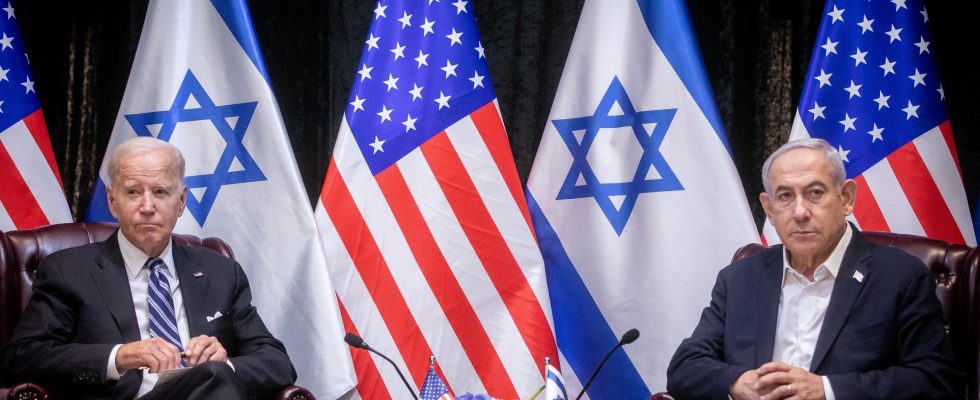It is now forty-five days since they were kidnapped by Hamas. It was last October 7, when Palestinian terrorists launched an unprecedented offensive on the soil of the Jewish state, massacring more than 1,200 innocent people, and kidnapping nearly 300 people. If the negotiations undertaken since have allowed the release of four hostages including two Americans, around 240 of them are still detained by the terrorist organization.
But mid-last week, the talks were abruptly halted. In question, the decision of the leader of Hamas in the Gaza Strip, Yahya Sinouar, to suspend the discussions. The reason ? The raid carried out by the Israeli army on the Al-Chifa hospital where hostages were allegedly taken the day after the “al-Aqsa flood” operation After a break of several days, negotiations however seem to have resumed this weekend -end.
Qatar at the heart of discussions
The epicenter of the talks is in Doha. Since the start of the conflict, Qatar has distinguished itself as one of the main mediators in the release of hostages. This Sunday, November 19, the Qatari Prime Minister, Mohammed ben Abdelrahmane Al-Thani, affirmed that the conclusion of an agreement on the release of the hostages kidnapped during the Hamas attack is now based on “minor” practical questions, without providing a precise timetable.
Alongside him, Egypt and the United States, which are also at the forefront of the negotiations, announced on Sunday that the discussions had never been so close to reaching an agreement. “Negotiations to obtain the release of hostages held by Hamas are close and disagreements between the parties have tightened amid intensive talks, Deputy National Security Advisor Jon Finer said this Sunday, November 19 on CNN.
50 hostages released against a 4 to 5 day cessation of fighting
If Washington did not wish to discuss the details and modalities of the agreement which are intended to evolve, the negotiators hope for the release of around fifty hostages out of the 240 held captive by Hamas, as revealed our colleagues from World. This, in return for a moratorium on the Israeli military operation in the north of the Gaza Strip lasting four to five days in order to allow the secure delivery of humanitarian aid, we learn in THE Washington Post.
The release of an equivalent number of Palestinian women and children held in the jails of the Jewish state is also part of the conditions. As well as the suspension of aerial surveillance for six hours a day so that Hamas terrorists can locate the hostages they claim to have lost, without being spied on by the Israeli army, adds the American media Axios.
In the scenario where the co-belligerents respect their commitments, the text stipulates that a new round of around twenty hostages could be released in addition to the first. This would bring the number of people released to 70 or 75. A figure which remains well below the 240 people held hostage by the terrorist organization. And which does not seem to convince the Jewish state.
A “truce” disguised as a “ceasefire”?
Especially since the Israeli government fears that a moratorium on fighting would appear in the eyes of the terrorist organization, whose troops are dispersed, as a fantastic opportunity to come together with a view to reorganizing. This is why this truce should in no case be called a “ceasefire”. For the director of the Israeli National Security Council, Tzachi Hanegbi, the golden rule to follow is the following: wait for real proof of a “massive” release of hostages before any cessation of the military operation.
A position which, however, deserves to be qualified, as Israeli public opinion expects the government to make the release of the hostages its priority. For five days, some thirty thousand Israelis guided by the families of the hostages marched from Tel Aviv to Jerusalem. The goal ? Put pressure on the head of the Israeli government Benyamin Netanyahu, severely weakened since the Hamas attack on October 7. The demonstration, in which Yaïr Lapid, former Prime Minister and main opponent of Benjamin Netanyahu, took part, notably ended in front of the building which houses both the office and the residence of the latter.
Arriving this Saturday in the Israeli capital, the families of the hostages are preparing to be received in the evening by the Prime Minister and his war cabinet made up, among others, of the Minister of Defense and the official camp leader, Benny Gantz. A real balancing act played by Benyamin Netanyahu, who must at the same time deal with his core electorate, nationalist and conservative, who equates any negotiation with the enemy with an admission of weakness, and expects the Prime Minister to come end Hamas. Whatever it takes.
